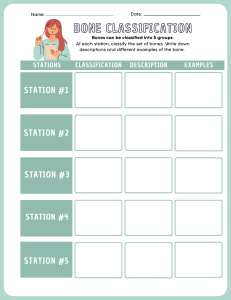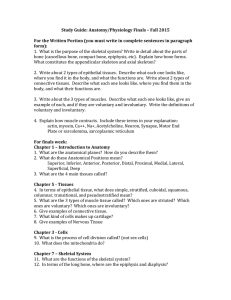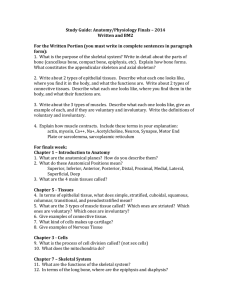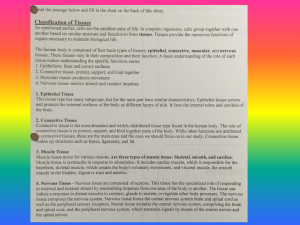Lecture Exam 4 Study Guide
advertisement
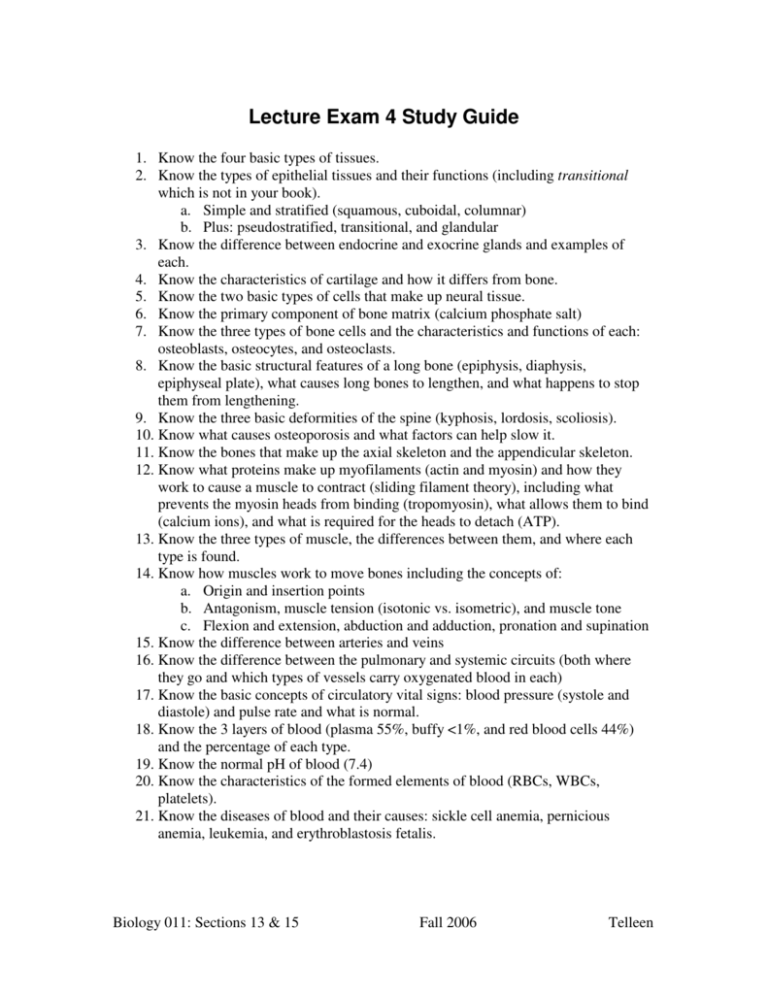
Lecture Exam 4 Study Guide 1. Know the four basic types of tissues. 2. Know the types of epithelial tissues and their functions (including transitional which is not in your book). a. Simple and stratified (squamous, cuboidal, columnar) b. Plus: pseudostratified, transitional, and glandular 3. Know the difference between endocrine and exocrine glands and examples of each. 4. Know the characteristics of cartilage and how it differs from bone. 5. Know the two basic types of cells that make up neural tissue. 6. Know the primary component of bone matrix (calcium phosphate salt) 7. Know the three types of bone cells and the characteristics and functions of each: osteoblasts, osteocytes, and osteoclasts. 8. Know the basic structural features of a long bone (epiphysis, diaphysis, epiphyseal plate), what causes long bones to lengthen, and what happens to stop them from lengthening. 9. Know the three basic deformities of the spine (kyphosis, lordosis, scoliosis). 10. Know what causes osteoporosis and what factors can help slow it. 11. Know the bones that make up the axial skeleton and the appendicular skeleton. 12. Know what proteins make up myofilaments (actin and myosin) and how they work to cause a muscle to contract (sliding filament theory), including what prevents the myosin heads from binding (tropomyosin), what allows them to bind (calcium ions), and what is required for the heads to detach (ATP). 13. Know the three types of muscle, the differences between them, and where each type is found. 14. Know how muscles work to move bones including the concepts of: a. Origin and insertion points b. Antagonism, muscle tension (isotonic vs. isometric), and muscle tone c. Flexion and extension, abduction and adduction, pronation and supination 15. Know the difference between arteries and veins 16. Know the difference between the pulmonary and systemic circuits (both where they go and which types of vessels carry oxygenated blood in each) 17. Know the basic concepts of circulatory vital signs: blood pressure (systole and diastole) and pulse rate and what is normal. 18. Know the 3 layers of blood (plasma 55%, buffy <1%, and red blood cells 44%) and the percentage of each type. 19. Know the normal pH of blood (7.4) 20. Know the characteristics of the formed elements of blood (RBCs, WBCs, platelets). 21. Know the diseases of blood and their causes: sickle cell anemia, pernicious anemia, leukemia, and erythroblastosis fetalis. Biology 011: Sections 13 & 15 Fall 2006 Telleen
